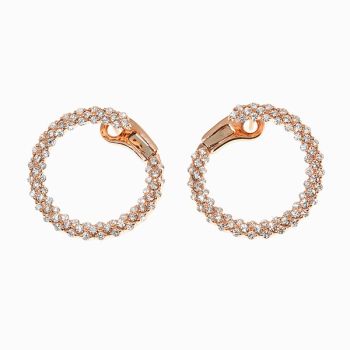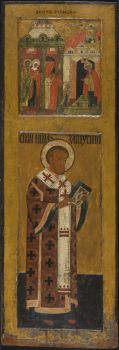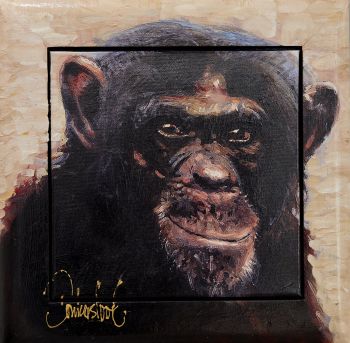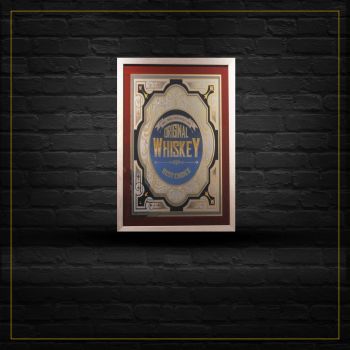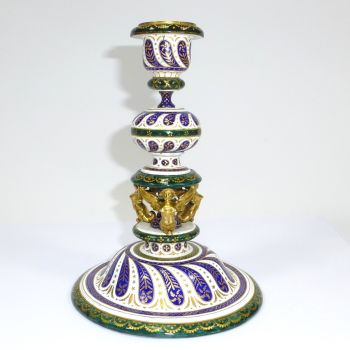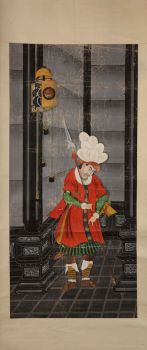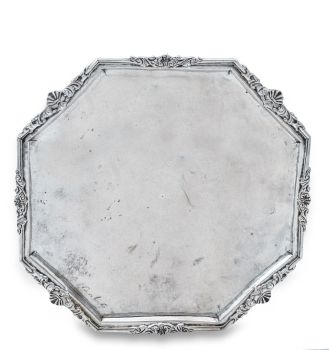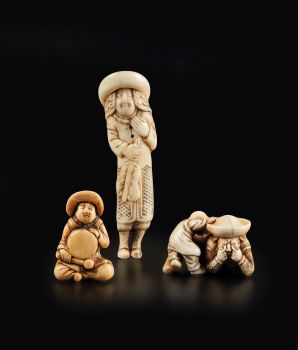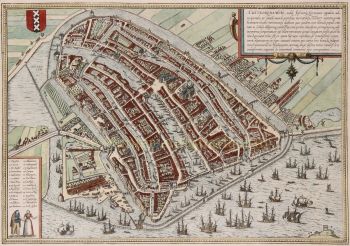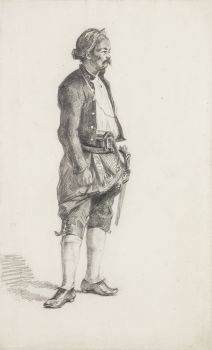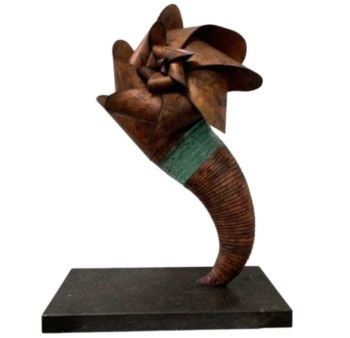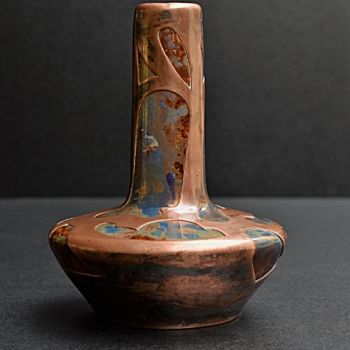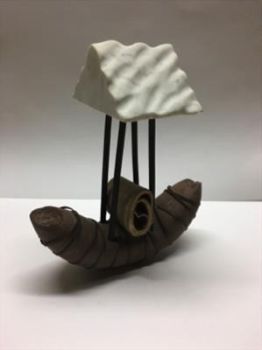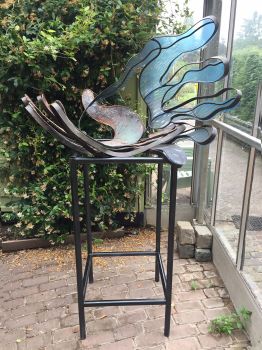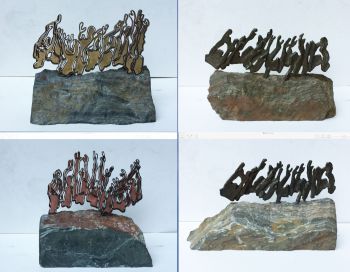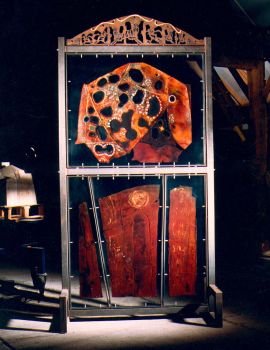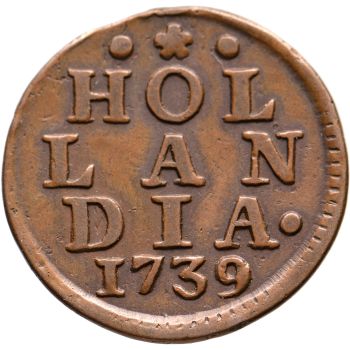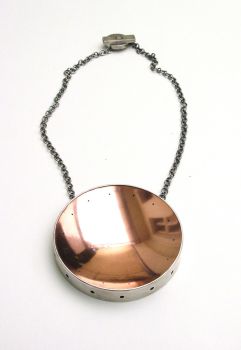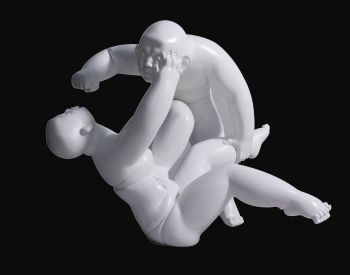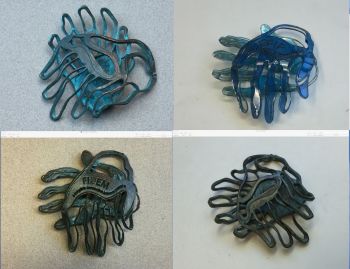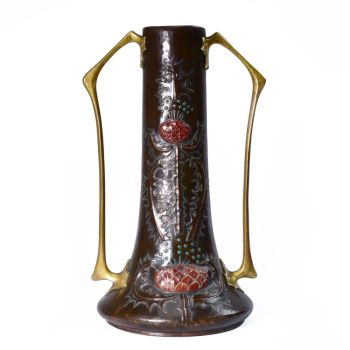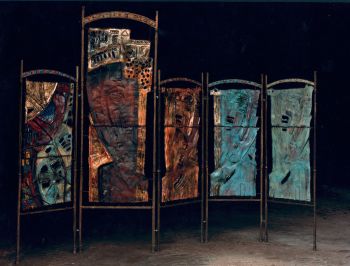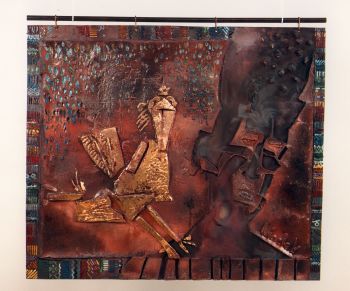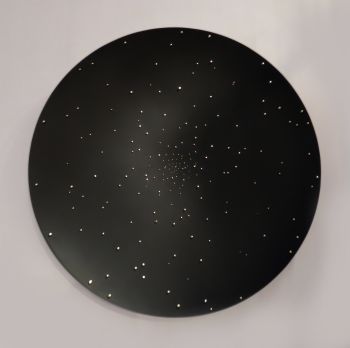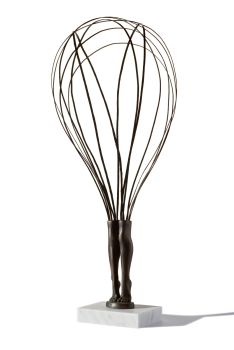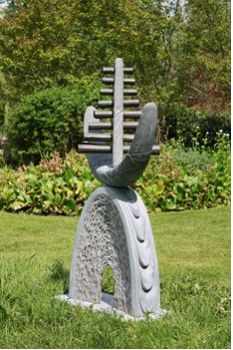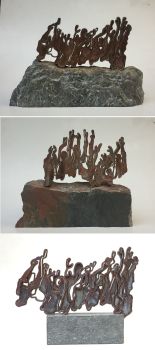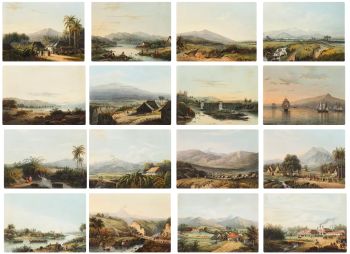An impressive and large Japanese transition-style lacquer coffer with fine gilt copper mounts, on Fr 1640 - 1650
Unknown artist
MetalCopperLacquer
Price on request
Zebregs & Röell - Fine Art - Antiques
- About the artworkKyoto, 1640-1650, the base part 18th century
Coffer: L. 132.7 x H. 62.8 x D. 59.3 cm
Stand: L. 143.7 x H. 51 x D. 71.9 cm
The coffer with shaped cartouches on a nashiji ground on the lid, front and sides, with fine decorations in various techniques: takimaki-e (high relief), tsuke-gaki (drawing with narrow lacquer lines and over sprinkling with gold and silver), usuniku-takamei-e (demi relief), kimekomi (pushed inside) and accents of kirigane (small geometrical metal mosaics). Inside the cartouche on the lid a landscape with volcanos, at their feet temples and around their summits clouds. Inside the cartouche of the front a hilly landscape with trees, huts and two cows at a waterside, under clouds. The cartouches at the sides show autumn grasses, chrysanthemum and campanula, and the back is decorated with trails of clematis. The black lacquered and gilt mounts showing a mom, a Japanese family coat of arms, are quite similar to the black and gilt mounts of the Mazarin coffer in the V&A museum (inv. 412:1-1882) and the recently acquired coffer in the Rijksmuseum (inv. AK-RAK-2013-3-1).
After the five year lapse in trade with Japan as a result of the Taiwan Incident (see number 44 in Uit Verre Streken, November 2021, a wood block print depicting the capture of Pieter Nuyts, the Dutch governor of Formosa/Taiwan, by Japanese sea captains in 1628), in 1633 ordering of Japanese lacquer by the VOC as well as by private trade seriously took off. Attempts by the VOC to prevent private trade were largely unsuccessful. Private traders were quicker, got the better pieces and often for better prices than the VOC which had to rely on officials whom themselves traded privately. It was not difficult for Dutch clients outside Japan, having the right connections with VOC officials in the Netherlands or Batavia, or even directly through merchants on Deshima, to buy Japanese lacquer. By its nature, private trade is rather elusive, usually lacking written document such as letters, orders or invoices. Much private trade dealt in the same objects the Company bought, so these pieces can not be distinguished. Whether the present coffer was ordered by the VOC or by a private trader therefore can not be decided. By the end of the 17th century, because of complaints about the prices and the quality of the lacquer offered by the VOC, the Company decided to stop trading in lacquer all together in 1693. Successful private trade in lacquer continued though.
The base was probably made in the 18th century, but the unworked horizontal gilt-bronze mounts are 19th century. Often, a bureau by Boulle was made into two console tables, with the remainder of the mounts being used for a smaller piece of furniture like the stand present. The worked mounts have been XRF analyzed and seem to date from the exact working period of Charles Boulle. - About the artist
It might happen that an artist or maker is unknown.
Some works are not to be determined by whom it is made or it is made by (a group of) craftsmen. Examples are statues from the Ancient Time, furniture, mirroirs, or signatures that are not clear or readible but as well some works are not signed at all.
As well you can find the following description:
•“Attributed to ….” In their opinion probably a work by the artist, at least in part
•“Studio of ….” or “Workshop of” In their opinion a work executed in the studio or workshop of the artist, possibly under his supervision
•“Circle of ….” In their opinion a work of the period of the artist showing his influence, closely associated with the artist but not necessarily his pupil
•“Style of ….” or “Follower of ….” In their opinion a work executed in the artist’s style but not necessarily by a pupil; may be contemporary or nearly contemporary
•“Manner of ….” In their opinion a work in the style of the artist but of a later date
•“After ….” In their opinion a copy (of any date) of a work of the artist
•“Signed…”, “Dated….” or “Inscribed” In their opinion the work has been signed/dated/inscribed by the artist. The addition of a question mark indicates an element of doubt
•"With signature ….”, “With date ….”, “With inscription….” or “Bears signature/date/inscription” in their opinion the signature/ date/ inscription has been added by someone other than the artist
Are you interested in buying this artwork?
Artwork details
Related artworks
- 1 - 4 / 12
Unknown artist
Japanese transition-style lacquer coffer 1640 - 1650
Price on requestZebregs & Röell - Fine Art - Antiques
Unknown artist
A Surinam-themed Amsterdam long-case clock1746 - 1756
Price on requestZebregs & Röell - Fine Art - Antiques
 Curated by
Curated byGallerease Magazine
Unknown artist
A Dutch colonial Indonesian betel box with gold mounts1750 - 1800
Price on requestZebregs & Röell - Fine Art - Antiques
Unknown artist
A silver spoon commemorating Juff’ Margareta van Hoorn1656 - 1694
Price on requestZebregs & Röell - Fine Art - Antiques
1 - 4 / 24Unknown artist
A Dutch colonial Indonesian betel box with gold mounts1750 - 1800
Price on requestZebregs & Röell - Fine Art - Antiques
Unknown artist
Japanese transition-style lacquer coffer 1640 - 1650
Price on requestZebregs & Röell - Fine Art - Antiques
Unknown artist
A rare Japanese export lacquer medical instrument box1650 - 1700
Price on requestZebregs & Röell - Fine Art - Antiques
Unknown artist
AN IVORY NETSUKE OF A DUTCHMAN FROLICKING WITH A SMALL BOY18th century
Price on requestZebregs & Röell - Fine Art - Antiques
Unknown artist
A MARINE IVORY NETSUKE OF A DUTCHMAN HOLDING A CHINESE FAN18th century
Price on requestZebregs & Röell - Fine Art - Antiques
Unknown artist
The Stamford Raffles Secretaires.1800 - 1813
Price on requestZebregs & Röell - Fine Art - Antiques
1 - 4 / 24Unknown artist
Dutchmen in miniature (Netsuke)1700 - 1900
Price on requestZebregs & Röell - Fine Art - Antiques
Shiba Kokan
Painting of a Fantasy Dutchmanearly 19th
Price on requestZebregs & Röell - Fine Art - Antiques
Unknown artist
Dutchmen in Miniature18th century
Price on requestZebregs & Röell - Fine Art - Antiques
Unknown artist
A IVORY NETSUKE OF A DUTCHMAN HOLDING A COCKEREL18th century
Price on requestZebregs & Röell - Fine Art - Antiques
Unknown artist
A MARINE IVORY NETSUKE OF A DUTCHMAN HOLDING A CHINESE FAN18th century
Price on requestZebregs & Röell - Fine Art - Antiques
Unknown artist
A JAPANESE MODEL OF A NORIMONO, A PALANQUIN1650 - 1700
Price on requestZebregs & Röell - Fine Art - Antiques
Unknown artist
A silver spoon commemorating Juff’ Margareta van Hoorn1656 - 1694
Price on requestZebregs & Röell - Fine Art - Antiques
Unknown artist
Two study portraits of Mas Marco Kartodikromo 1900 - 1950
Price on requestZebregs & Röell - Fine Art - Antiques
1 - 4 / 24- 1 - 4 / 24
Unknown artist
Japanese transition-style lacquer coffer 1640 - 1650
Price on requestZebregs & Röell - Fine Art - Antiques
Unknown artist
A SMALL IVORY NETSUKE OF A DUTCHMAN WITH A DRUM1750 - 1800
Price on requestZebregs & Röell - Fine Art - Antiques
Abraham Salm
Twenty-four chromolithographs of Java after A. Salm”1801 - 1876
Price on requestZebregs & Röell - Fine Art - Antiques
1 - 4 / 12





